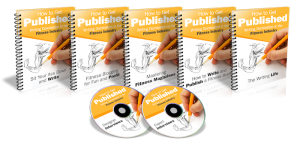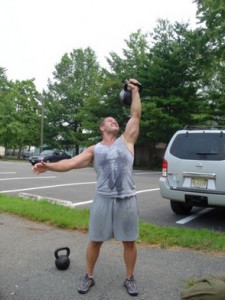 If you’ve leafed through a magazine in the past 10 years that had a half-naked man on the cover, there’s a good chance you’ve come across something I wrote or edited. (I hope it didn’t suck.) My name is Sean Hyson, and I am the training director for Men’s Fitness andMuscle&Fitness magazines.
If you’ve leafed through a magazine in the past 10 years that had a half-naked man on the cover, there’s a good chance you’ve come across something I wrote or edited. (I hope it didn’t suck.) My name is Sean Hyson, and I am the training director for Men’s Fitness andMuscle&Fitness magazines.
I have worked with all kinds of trainers and nutritionists for the past decade, many of whom have become leaders in our industry. I remember asking Jason Ferruggia for a bench press tip one time—in what ultimately became his first appearance in Men’s Fitness or any magazine—and I was so impressed with his advice that I helped him get his own column shortly thereafter.
I was the first to write about Jim Wendler’s 5/3/1 in a mainstream publication, and I championed John Kiefer’s Carb Back-loading before it spawned countless imitators.
I’m not writing to bore you with my resume, but to demonstrate what the world of magazine publishing can mean to your career as a fitness professional. I’m certainly not the only open-minded editor out there with an eye for talent—fitness magazines today crave fresh ideas and charismatic writers.
I want to help you hook up with them.
First, let’s look at what NOT to do.
6 Mistakes You Don’t Want To Make When Trying To Get Published in Magazines
1 Getting the wrong guy.
Once you’ve found a magazine you want your work to appear in, the next step is to find the appropriate editor to whom you’ll send your pitch. It isn’t always clear from the magazine’s masthead which of those people is the right one, but reaching out to the wrong one can delay or even bury your pitch. TIP: If you’re pitching a fitness or nutrition story, the associate editor is usually going to be the correct contact over someone like the deputy editor (and you definitely don’t go straight to the editor in chief). Associate editors typically head up specific sections in the magazine, like food/nutrition, fitness, diet, etc.
2 Thinking TOO big.
Editors want expert contributors who think outside the box and offer creative, original information. But space is tight in magazines, and very few stories become big features. Don’t insist on exploring every aspect of the topic you’re pitching. If the editor needs it to be distilled into three specific tips and 300 total words, be happy with that. Also, don’t suggest serials (a story that extends to multiple subsequent issues) or columns—these are rarely done and certainly don’t go to newbie writers. Furthermore, when they’re assigned to you, be happy to work on short articles that are based around one to three quick tips. They’re not as fancy and memorable as five-page feature stories, but they get read just as often. And getting read is the ultimate reward for a writer!
3 Not knowing the magazine’s audience.
I’m always amazed when I get pitched stories about pre-natal workouts or how the elderly should train. I work at two magazines that focus on men (aged roughly 18 to 40). Pitches like this are not only laughable, they’re insulting. It’s clear that whoever sent them isn’t interested in what I do or what the magazine is about—I’m just another name on their list. They’ll keep throwing darts until they hit something. TIP: It doesn’t matter how good the idea is or how talented a writer you are, if it doesn’t fit with what the magazine does, it’s going to get deleted from the editor’s inbox.
4 Failing to find an angle.
An ab workout is never just a collection of ab exercises. It needs a fun, creative sales pitch to dress it up. Whatever your workout philosophy, consider how it will appeal to the specific audience that reads the publication, and what it offers that makes it distinct. Just listing ab exercises and swearing that they got your clients six-packs isn’t enough.
5 Repeating an idea that worked somewhere else.
Magazines certainly aren’t as timely as the Internet, but they still strive to offer something new every month. If you’ve been lucky already and gotten published in your local paper, another magazine, or on a website, don’t think that you can change a few words to the story and sell it again. It’s embarrassing when a magazine is about to run a story that just came out a week earlier under another brand. And if you embarrass your editor, you’re not likely to get any more work from him/her. TIP: If the idea you’re pitching has appeared elsewhere, tell your editor first, and be prepared to spin it a different way.
6 Being too rigid.
Everyone wants to protect their integrity, but magazines are a business like any other. If your editor wants to make mention of specific supplements in your nutrition piece, be open to the idea. You’ll almost always get a say in what brand or type the story recommends, so don’t reject the request on principle.
In our new FIVE e-book package, How To Get Published, Lou Schuler, John Romaniello, and I cover EVERYTHING you need to know to see your name in print. Just the section on breaking into magazines alone looks at the following:

You NEED this product if you want to write for money.
How editors think and what they do
The various types of mag articles and how to write them
How magazines are organized
Packaging (the marketing, or spin of a story)
How to write headlines, decks, leads, conclusions, and technical descriptions
How to write with humor
How to find and contact editors
How to pitch stories
Concessions you may need to make
A look at the editing process
The other e-books are:
Sit Your Ass Down and Write. A look at the basics of writing and how fitness writing must always promise a specific biological benefit.
Fitness Blogging for Fun and Profit. Roman explains how to build a successful blog that both showcases your writing and earns money.
How To Write a Book. Lou Schuler, who’s authored eight successful fitness books and counting, helps you identify ideas that sell and teaches you how to write proposals that win over publishers.
The Writing Life. Any remaining questions you have about the world of publishing and what it takes to succeed in it are covered.
In addition, you get interviews that I conducted with top fitness writers like Craig Ballantyne, Jason Ferruggia, Nate Green, John Romaniello, and website designer Jason Lengstorf.
Listen to what the experts are already saying…
“I’ve been writing for fitness magazines and websites for more than 10 years. But when I began doing it, my education and experience did not prepare me for the challenge. At first, my editors would ask for fewer words, more description, and constant re-writes. I wish a product like this existed back then. It literally tells you how to get the job done right the first time. Having a resource as valuable as this would have saved me hours of frustration and wasted time. It can do more than that for you. It can get you into the magazines and websites now!” – C.J. Murphy, owner of Total Performance Sports and contributor to Men’s Fitness, Muscle&Fitness, Men’s Health, and elitefts.com
“The first time I was ever published in a magazine was in Men’s Fitness. Sean gave me the critical tips I needed to understand exactly how to deliver powerful, well-written articles that garner the attention of readers as well as make it easy for magazine editors to work with me on a regular basis.” – Zach Even-Esh, owner of The Underground Strength Gym and contributor to Men’s Fitness, Fight!, and T-muscle.com

Zach read it. You should too!
“I can honestly say that Sean Hyson has been instrumental to my success and development as an author. He gave me a chance many years ago in Men’s Fitness when I was still an unknown strength coach. I still remember the issue and the story like it was yesterday. I had no idea what I was doing but through his direction and guidance, my first article was the featured workout, spanning four whole pages. Sean taught me how critical it was to understand the magazine you’re writing for, and to learn what the readers expect from you before you even start the article. I was so used to my own style of writing for my site that the first draft I sent Sean was beyond horrible. I’m sure he had a ton of sleepless nights trying to edit that monstrosity! Fortunately, I got better, and today, I have been published in most every national fitness magazine on the market.” – Jim Smith, owner of Diesel Strength and Conditioning and contributor to Men’s Fitness, Oxygen, and Livestrong.com
“Sean Hyson is easily one of the best writers in the fitness industry today. Working closely with him over the last decade has improved my skills considerably and taught me what it takes to produce easily consumable, high-quality content. He is not only my friend and brother but someone I continue to learn from on a regular basis. Watch what he does, listen to what he says, and you’ll get better. It’s that simple.” – Jason Ferruggia, owner of The Renegade Gym and contributor to Men’s Fitness, Men’s Health, Today’s Man, and Maximum Fitness
How to Get Published: Writing Domination in the Fitness Industry—five ebooks and five bonus audio interviews—is ON SALE THIS WEEK ONLY FOR $97. Starting September 24, the price will go up to $147.
CLICK HERE to save $50 on How To Get Published.
Also, buying the book now automatically gets you 50% OFF our upcoming writers workshop in NYC, where you can meet and work with Lou, Roman, and me directly.
Join the Discussion
Related Content